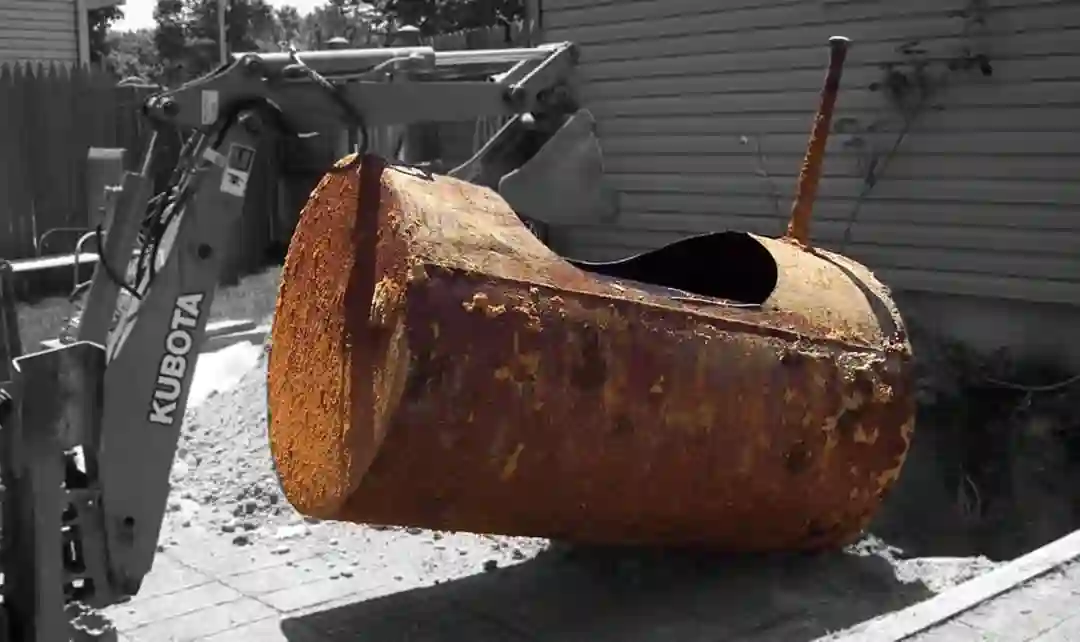
Rising from the Depths: A Guide to Residential Oil Tank Removal
In the realm of homeownership, hidden beneath the foundations and nestled in the depths of the soil, lies a potential environmental concern – the residential oil tank. As the custodian of a property, understanding the intricacies of oil tank removal is crucial, especially if your residence is adorned with an aging underground oil storage tank. This guide aims to shed light on the importance of residential oil tank removal, the associated risks, and the step-by-step process to ensure a seamless transition from potential hazard to peace of mind.
The Silent Threat Beneath Your Feet: Aging Oil Tanks
Many homes, particularly those constructed several decades ago, were equipped with underground oil storage tanks as a means of fuel storage for heating systems. Over time, these tanks can succumb to corrosion, leading to leaks that pose significant environmental and health risks. Undetected leaks can contaminate soil and groundwater, resulting in long-term damage to the ecosystem and potential health issues for residents.
Environmental and Health Risks
One of the primary concerns associated with aging oil tanks is the release of hazardous substances into the surrounding environment. Oil leaks can contaminate soil, affecting vegetation and potentially finding its way into nearby water sources. This contamination can have far-reaching consequences, impacting not only your property but the broader ecosystem.
Furthermore, exposure to oil vapors can pose health risks to residents. Prolonged inhalation of these vapors may lead to respiratory problems, skin irritation, and other adverse health effects. Recognizing the potential dangers underscores the importance of proactive measures, including regular inspections and, when necessary, the removal of outdated oil storage tanks.
The Step-by-Step Guide to Residential Oil Tank Removal
1.Assessment and Inspection:
The first step in addressing an underground oil tank is a comprehensive assessment. Engage the services of a qualified environmental professional to inspect the tank and surrounding soil for any signs of leakage or contamination. This assessment provides a baseline for the next steps in the removal process.
2.Obtain Necessary Permits:
Before embarking on the removal process, it’s crucial to obtain the necessary permits from local authorities. Compliance with regulations ensures a smooth and legal transition throughout the removal procedure.
3.Tank Pumping and Cleaning:
Prior to removal, the tank must be emptied of any remaining oil and thoroughly cleaned to minimize the risk of spills during extraction. Professional technicians utilize specialized equipment to ensure a safe and efficient pumping process.
4.Tank Excavation:
With the tank emptied and cleaned, excavation begins. Heavy machinery is often employed to unearth the underground tank carefully. This process requires precision to avoid damage to the tank and prevent any potential spills.
5.Tank Removal and Disposal:
Once excavated, the tank is removed from the site. Proper disposal methods, in accordance with environmental regulations, are employed to ensure the safe and responsible handling of the tank.
6.Soil Remediation:
In cases where soil contamination is detected, remediation efforts are initiated. This may involve removing and replacing contaminated soil to restore the environmental balance of the area.
7.Verification and Documentation:
After the removal process is complete, a final inspection is conducted to verify that all regulatory requirements have been met. Documentation of the removal process, including permits and inspection reports, should be retained for future reference.
Conclusion:
Residential oil tank removal is a responsible and necessary undertaking for homeowners with aging underground tanks. By understanding the risks associated with these tanks and following a systematic removal process, homeowners can safeguard their properties, the environment, and the health of their families. As the tank rises from the depths, so does the assurance of a safer and healthier living environment for all.